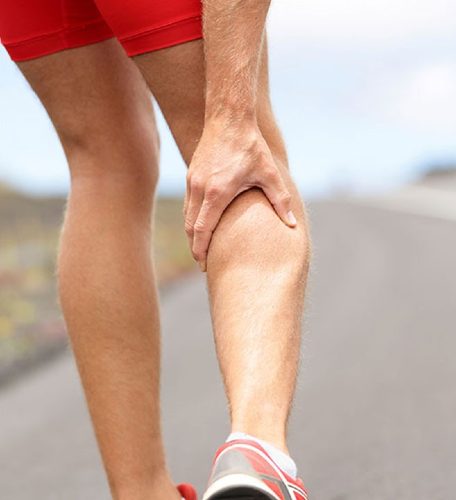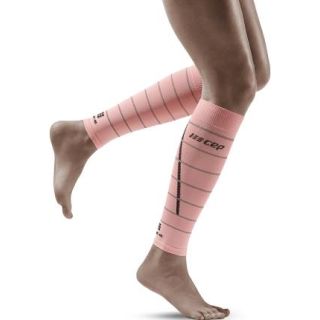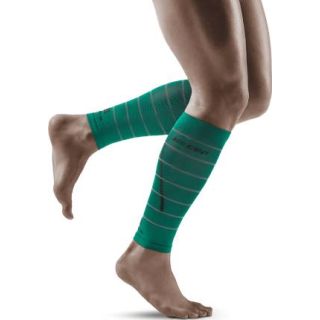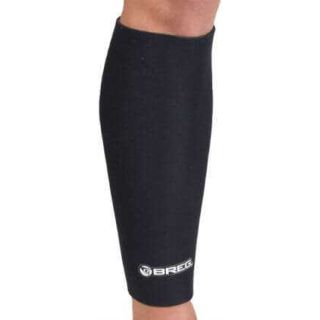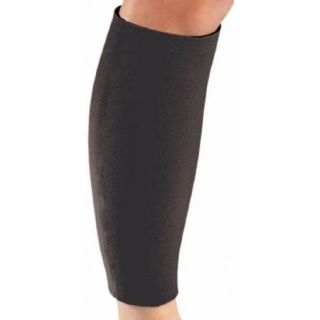Calf Muscle Strain
March 26, 2025Understanding Calf Strains: Causes, Symptoms, and Recovery
A calf strain is a common injury that affects people of all activity levels, from casual walkers to elite athletes. The calf muscles, located at the back of the lower leg, play a crucial role in movement, particularly in walking, running, and jumping. When these muscles are overstretched or overworked, a strained calf muscle can occur, leading to discomfort and limited mobility.
This article discusses what a calf muscle strain entails, why it happens, how to recognize it, and the best ways to recover and prevent it in the future.
What Is a Calf Strain?
A calf strain refers to an injury where the muscle fibers in the calf—specifically the gastrocnemius or soleus muscles—tear or stretch beyond their normal capacity. The gastrocnemius is the larger, more superficial muscle that gives the calf its defined shape, while the soleus lies beneath it and aids in endurance activities like standing or walking.
A strained calf muscle can range from mild (a small tear or overstretching) to severe (a complete rupture of the muscle fibers), and its severity determines the recovery timeline.
This injury is often categorized into three grades:
- Grade 1: A mild calf muscle strain with minimal tearing, causing slight muscle pain and stiffness but little loss of function.
- Grade 2: A moderate calf strain involving a partial tear, leading to noticeable pain, swelling, and difficulty walking or running.
- Grade 3: A severe strained calf muscle, where the muscle tears completely, resulting in intense pain, significant swelling, and an inability to bear weight on the affected leg.
Causes of a Strained Calf Muscle
A calf muscle strain can happen for a variety of reasons, often linked to sudden movements or overuse. Athletes, particularly runners and those involved in sports requiring explosive actions like basketball or tennis, are especially prone to this injury. Some common causes include:
- Sudden Acceleration or Deceleration: Sprinting or stopping abruptly can place excessive force on the calf muscles, leading to a calf strain. This is why warm-ups are critical before intense physical activity.
- Overuse: Repetitive strain from prolonged running or walking, especially on uneven terrain, can fatigue the muscles and result in a strained calf muscle.
- Poor Flexibility: Tight calf muscles are more susceptible to injury. Without proper stretching, the muscle fibers lack the elasticity needed to handle stress, increasing the risk of a calf muscle strain.
- Inadequate Footwear: Shoes without proper support or cushioning can alter your gait, putting undue pressure on the calf and causing a calf strain.
- Fatigue: When the body is tired, coordination and muscle strength diminish, making a strained calf muscle more likely during extended exercise.
Recognizing the Symptoms of a Calf Muscle Strain
Identifying a calf strain early can prevent further damage and speed up recovery. The symptoms depend on the injury’s severity but typically include:
- Pain: A sharp or sudden pain in the back of the lower leg is a hallmark of a strained calf muscle. In mild cases, it might feel like a tight pull, while severe cases can cause a popping sensation at the moment of injury.
- Swelling and Bruising: A moderate to severe calf muscle strain often leads to swelling, and bruising may appear as blood vessels rupture beneath the skin.
- Stiffness: After a calf strain, the muscle may feel tight or rigid, making it hard to flex or point the foot.
- Weakness: Difficulty standing on tiptoes or pushing off the affected leg is common with a strained calf muscle.
- Limping: Walking becomes challenging, especially with a Grade 2 or 3 calf muscle strain, as the leg struggles to support your weight.
If you experience a loud “pop” followed by immediate pain and an inability to walk, it’s critical to seek medical attention, as this could indicate a severe calf strain or even a torn Achilles tendon, which requires different treatment.
Treating a Calf Strain
The treatment for a strained calf muscle depends on its severity, but the initial approach for most cases follows the R.I.C.E. protocol—Rest, Ice, Compression, and Elevation. Here’s how to manage a calf muscle strain effectively:
- Rest: Avoid putting weight on the injured leg to prevent worsening the calf strain. For mild injuries, this might mean a few days of reduced activity, while severe cases could require weeks of rest.
- Ice: Apply an ice pack wrapped in a cloth to the affected area for 15 - 20 minutes every few hours. This reduces swelling and numbs any sharp pain in a strained calf muscle.
- Compression: Use an elastic bandage to wrap the calf, providing support and minimizing swelling from a calf muscle strain. You may also use a brace for a calf strain to provide compression and pain relief. Ensure it’s snug but not so tight that it cuts off circulation.
- Elevation: Keep the leg raised above the level of your heart when possible to decrease blood flow to the area and reduce swelling caused by a calf strain.
For Grade 1 injuries, over-the-counter pain relievers like ibuprofen can help with discomfort and inflammation. Grade 2 and 3 strained calf muscles may require a doctor’s evaluation, potentially including imaging (like an MRI) to assess the damage. In rare cases of a completely torn calf muscle, surgery might be necessary to repair the calf muscle strain.
Rehabilitation and Recovery
Once the acute pain of a calf strain subsides, rehabilitation is key to restoring strength and flexibility. Physical therapy often includes:
- Stretching: Gentle stretches to lengthen the strained calf muscle and improve flexibility, started only after the calf pain decreases.
- Strengthening Exercises: Gradual exercises like calf raises to rebuild muscle power without risking another calf muscle strain.
- Gradual Return to Activity: Avoid jumping back into intense exercise too soon, as this can re-injure the calf strain.
Recovery time varies: a mild strained calf muscle might heal in 1-2 weeks, while a moderate calf muscle strain could take 4-6 weeks. Severe cases may require months, especially if surgery is involved.
Preventing a Calf Muscle Strain
Prevention is always better than treatment when it comes to a calf strain. Here are some practical steps to reduce your risk:
- Warm Up Properly: Spend 5-10 minutes doing dynamic stretches or light jogging before exercising to prepare the calf muscles and avoid a strained calf muscle.
- Stretch Regularly: Incorporate calf stretches into your routine to maintain flexibility and reduce the chance of a calf muscle strain.
- Strengthen the Calves: Exercises like calf raises build resilience, making a calf strain less likely during activity.
- Wear Appropriate Shoes: Choose footwear with good arch support and cushioning to minimize stress on the calves and prevent a strained calf muscle.
- Listen to Your Body: Avoid pushing through fatigue or pain, as this increases the risk of calf muscle injuries.
When to See a Doctor
While many calf strains heal with home care, certain signs warrant professional attention. Seek medical help if you experience:
- Severe pain or inability to walk after a calf injury.
- Significant swelling or bruising that worsens over time.
- Numbness or tingling, which could indicate nerve involvement beyond a simple calf muscle strain.
Final Thoughts
A calf strain can be a frustrating setback, but with proper care, most people recover fully. Whether it’s a mild tweak or a more serious strained calf muscle, understanding the injury’s causes, symptoms, and treatment options empowers you to manage it effectively. By taking preventive measures, you can minimize the chances of a future calf muscle strain and keep your legs strong and ready for action.
DME-Direct carries a large selection of braces for recovery from a pulled calf muscle. These are alll designed to help aid in with your recovery journey. If you need to find the best compression sleeve for a strained calf muscle, we have one to suit your needs.
